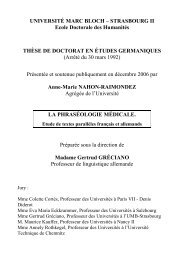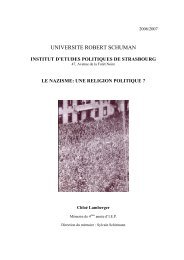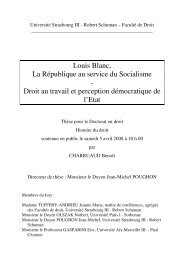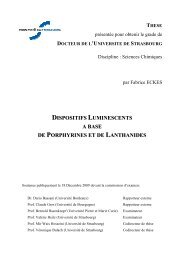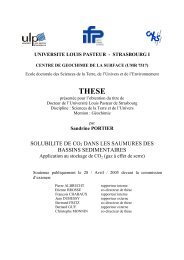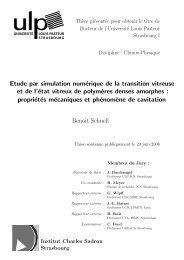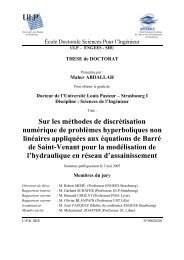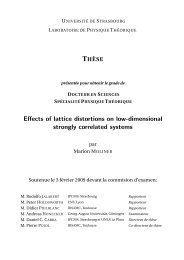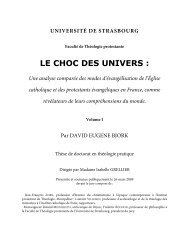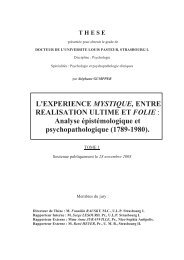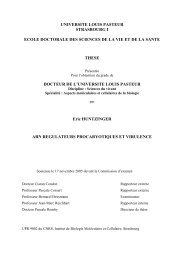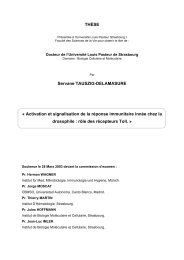Économie Évolutionniste et Culture d'Entreprise
Économie Évolutionniste et Culture d'Entreprise
Économie Évolutionniste et Culture d'Entreprise
Create successful ePaper yourself
Turn your PDF publications into a flip-book with our unique Google optimized e-Paper software.
valid, it would pr<strong>et</strong>ty well dispose of genes as units of selection in biology as well—since, apart from the case of identical<br />
twins, individuals are unique in their gen<strong>et</strong>ic composition once you look at all the dimensions. So I don’t think that is a<br />
fundamental problem. But as a matter of operationalizing the program, it is a very real research task to understand how<br />
routines, while not being precisely identical from one organization to another, are similar, y<strong>et</strong> different in selectively<br />
significant ways, and I think you have to able to incorporate both of those facts in a proper evolutionary theory. (Winter, 2003,<br />
p. 12).<br />
Nous pensons au contraire, dans la lignée de Knudsen (2001), qu’il s’agit d’une question centrale à<br />
laquelle devrait répondre toute théorie de l’évolution :<br />
[E]volution of organisational knowledge by natural selection may be defined as a two-step process. Step one involves (direct)<br />
replication of a notional code (containing implicit and explicit productive knowledge), and in step two the entity of interest<br />
(directly) interacts with the environment in a way that causes differential replication (of implicit and explicit productive<br />
knowledge). Evolution, then, is defined in terms of variation accumulated over time because of the independent but, causally<br />
linked, subprocesses of knowledge replication and interaction among members of productive teams. Selection, in turn, can be<br />
defined as ‘a process in which the differential extinction and proliferation of interactors cause the differential perp<strong>et</strong>uation of<br />
the relevant replicators.’ (Hull, 1991: p. 409). (Knudsen, 2001, p. 6-7).<br />
Pour espérer lever c<strong>et</strong>te ambiguïté inhérente chez Nelson <strong>et</strong> Winter (1982), il serait peut-être utile<br />
d’établir une traçabilité de leur conceptualisation des routines. Nous avons vu que Nelson <strong>et</strong> Winter ont<br />
puisé leur inspiration essentiellement dans une lecture Schump<strong>et</strong>erienne du capitalisme <strong>et</strong> une vision<br />
Simonienne des processus de décision. Ils ne reprendront cependant ni la notion de routine telle<br />
qu’évoquée par Schump<strong>et</strong>er, ni la définition de Simon des routines en tant que mosaïque de programmes,<br />
mais reformuleront, à partir des travaux de Cyert <strong>et</strong> March (1963), ce qu’ils entendent par routine<br />
organisationnelle en proposant une perspective qui va au-delà de la notion d’habitudes individuelles <strong>et</strong> de<br />
pratiques collectives. Si on r<strong>et</strong>rouve des propriétés quasi-identiques dans les deux concepts à travers la<br />
répétition, le caractère automatique <strong>et</strong> tacite, le débat change de nature. En plus d’être le résultat de<br />
sources d’inspirations hétérogènes, la conceptualisation évolutionniste de Nelson <strong>et</strong> Winter a fait<br />
également l’obj<strong>et</strong> d’un long processus de tâtonnement, que r<strong>et</strong>racent Becker <strong>et</strong> Lazaric (2002, p. 10) dans<br />
les travaux de Sidney Winter.<br />
Winter<br />
(1971)<br />
Réplicateurs Simple règles de<br />
décision<br />
Interacteurs 27<br />
Winter<br />
(1975)<br />
Non mentionnés Actions suscitées à<br />
partir d’une règle par<br />
des variables de<br />
l’environnement<br />
Nelson <strong>et</strong> Winter<br />
(1982)<br />
Winter<br />
(1995)<br />
Règles d’action Routines Routines<br />
Firmes Modèles appris de<br />
coordination<br />
interpersonnelle<br />
27 Les termes “réplicateur” <strong>et</strong> “interacteur” n’apparaissent pas directement chez Winter. Il s’agit ici de leurs équivalents.



